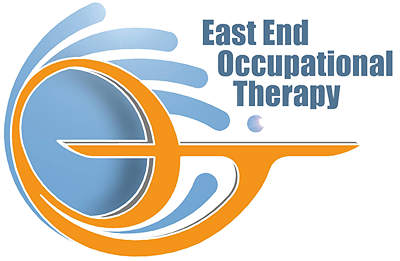What is Cubital Tunnel Syndrome?
If you’re having nerve pain in your elbow, one of the diagnoses you have a chance of receiving is cubital tunnel syndrome. This condition affects the ulnar nerve in your elbow and will cause pain in your elbow and affect how you can move and use your elbow. Some questions you may be having about cubital tunnel syndrome are “What is it?”, “What causes it?” and “What treatment can I get for it if I have it?” We at East End Occupational Therapy in Holbrook can provide some guidance on cubital tunnel syndrome and how occupational therapy can treat this condition.

If you think you have cubital tunnel syndrome, we can help you. If you or someone you know is looking for occupational therapy in Holbrook, we can help you get the services you need!
Synopsis of Cubital Tunnel Syndrome
Cubital tunnel syndrome occurs when you injure the ulnar nerve, which goes through the cubital tunnel – a tunnel of muscles, ligaments, and the ulna bone. The injury results in the ulnar nerve becoming inflamed and irritated.
The pain from cubital tunnel syndrome feels akin to hitting your “funny bone.” That is because this “bone” is not a bone, but your ulnar nerve, which goes out from your neck and through your elbow to the tips of your fingers.
What Causes Cubital Tunnel Syndrome?
If you think you may have cubital tunnel syndrome, you may be wondering what happened to have caused the injury. Common causes of cubital tunnel syndrome include:
- Bending your elbow often
- Pulling heavy objects
- Other strenuous physical activity
- Leaning on your elbow for an extended amount of time
- Having an injury in the area
- Arthritis
- Bone spurs
- Dislocations or fractures in the area
Symptoms of Cubital Tunnel Syndrome
Symptoms that may occur if you have cubital tunnel syndrome include:
- Numbness/tingling in your hand and/or arm
- Loss of sensation in your hand and/or arm
- Muscle weakness in your hand and/or arm
- Weak grip
- Hand and/or arm pain
- Elbow pain, especially on the inside of your elbow
These symptoms can also occur in other conditions and medical problems, such as golfer’s elbow. Therefore, it is always best to contact a physician, an occupational therapist, or another healthcare provider for a medical evaluation.
How is Cubital Tunnel Syndrome Diagnosed?
There are a few ways that a doctor can diagnose you with cubital tunnel syndrome. If you think you may have cubital tunnel syndrome, you may be asking yourself, “What tests will I go under for a diagnosis?” In addition to a full medical and physical exam, you may undergo one of the following diagnostic tests:
- Nerve Conduction Test: This type of test involves placing electrode patches on the skin over the affected nerve and sending an electrical impulse down the nerve, stimulating it. This test will determine whether a nerve is working well by showing how quickly signals go through the nerve in question.
- Electromyogram (EMG): This type of test involves using an electromyogram, which uses electrodes to translate electrical activity into a graph. This test checks on nerve & muscle function within the arm and the ulnar nerve. If your muscles are not stimulated properly, your ulnar nerve may have a problem.
- X-ray: This type of test takes an image of your bones to look for arthritis or bone spurs. Cubital tunnel syndrome may be caused by arthritis or bone spurs, so looking for those conditions in the elbow can help determine whether your ulnar nerve has been affected by them.
We at East End Occupational Therapy can help diagnose you if you believe you may have cubital tunnel syndrome. If we diagnose you with this condition, we have several treatments that we can provide to help you regain movement in your elbow!
Treatment for Cubital Tunnel Syndrome
If you’ve been diagnosed with cubital tunnel syndrome, looking for treatment is the next step in treating it. Some common treatments for this condition include:
- Rest/stopping the activity that caused your cubital tunnel syndrome
- A splint or elbow brace to limit movement
- An elbow pad
- Anti-inflammatory medication (ex. Ibuprofen, naproxen)
- Nerve gliding exercises
At East End Occupational Therapy, we provide rehabilitation services that can treat your cubital tunnel syndrome. You may be wondering to yourself, “What kind of services can help me?” Our team provides the following services to help you recover from your cubital tunnel syndrome:
- Hand and Upper Extremity Therapy: This type of therapy focuses on your hands, arms, elbows, and shoulders. We evaluate what caused your condition with hand and upper extremity therapy and what aggravates it and design a treatment plan with hands-on & modality techniques. This way, we create a program to give you freedom of movement in your elbow and pain relief.
- Custom Splints: Every person has a unique body, so we create custom splints for people to provide exceptional care to you. Our splints can treat nerve injuries as well as arthritis and nerve compressions, so using one of our splints can treat your cubital tunnel syndrome.
Occupational Therapy in Holbrook
Dealing with cubital tunnel syndrome or any other nerve condition can be difficult. Such conditions limit your movement and cause pain that makes every-day life a struggle. If you or someone you know needs occupational therapy in Holbrook, then we at East End Occupational Therapy will provide the care that you need. Please visit our website to learn more about us and what services we provide.
We look forward to helping you find relief from your nerve pain!




